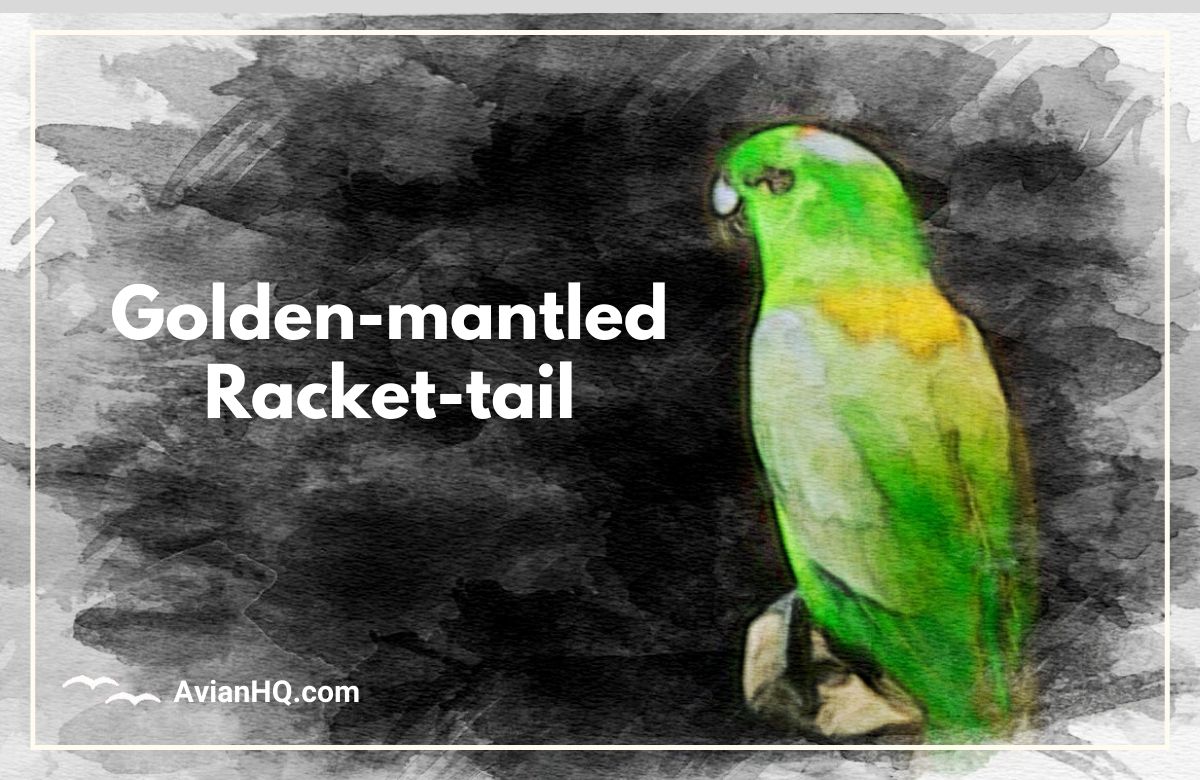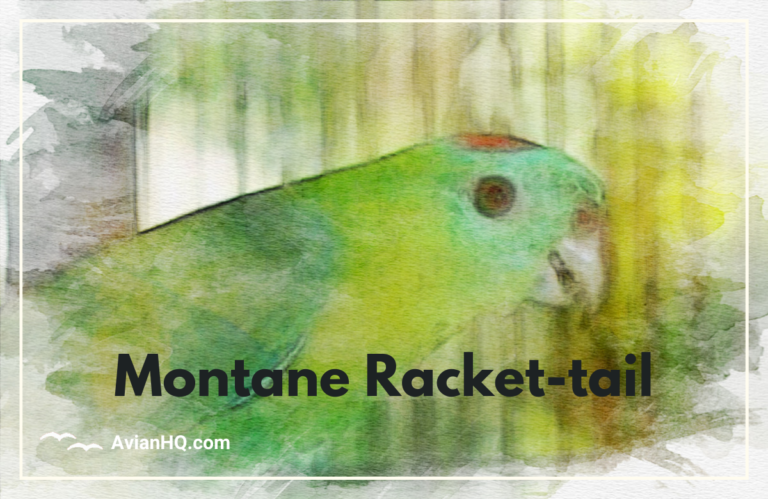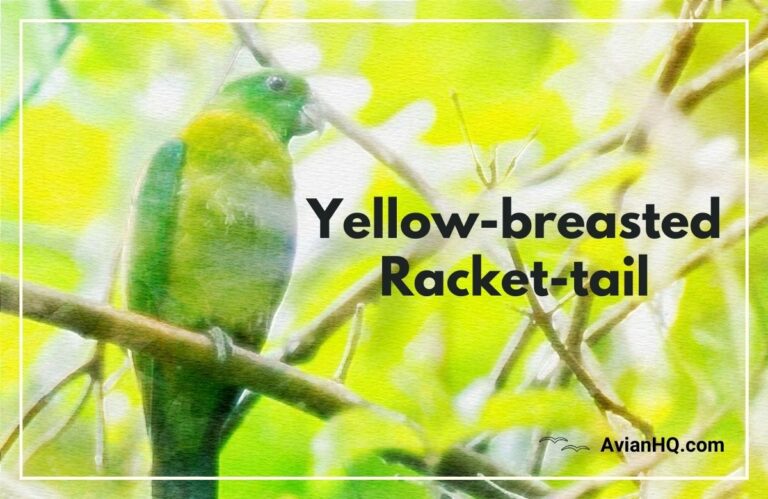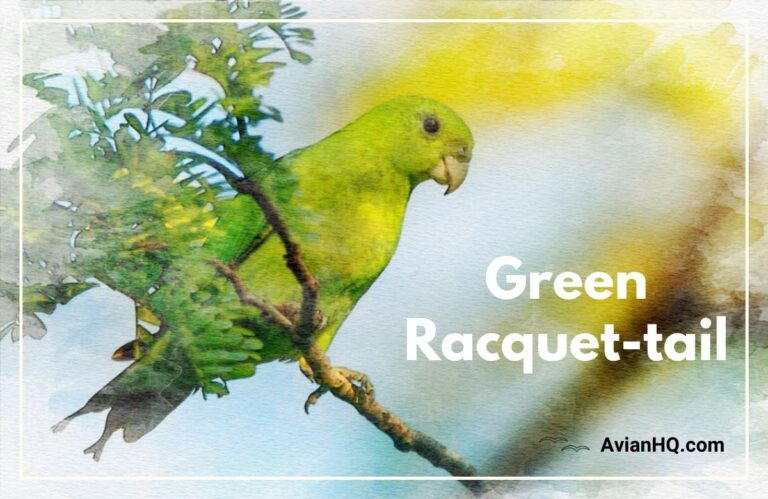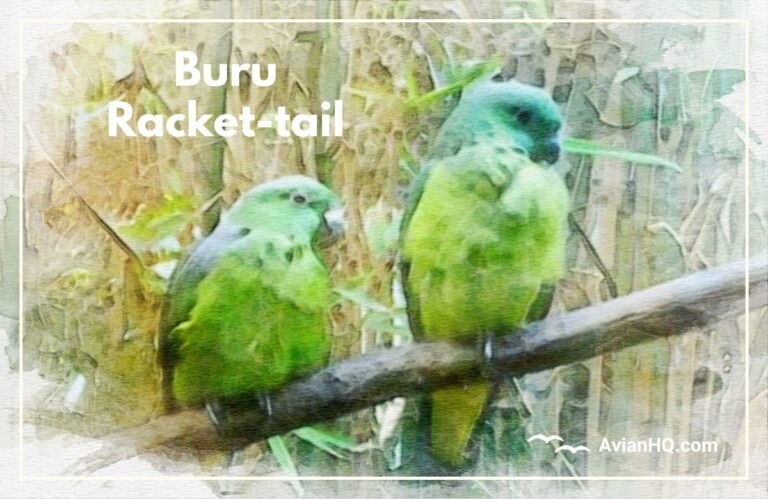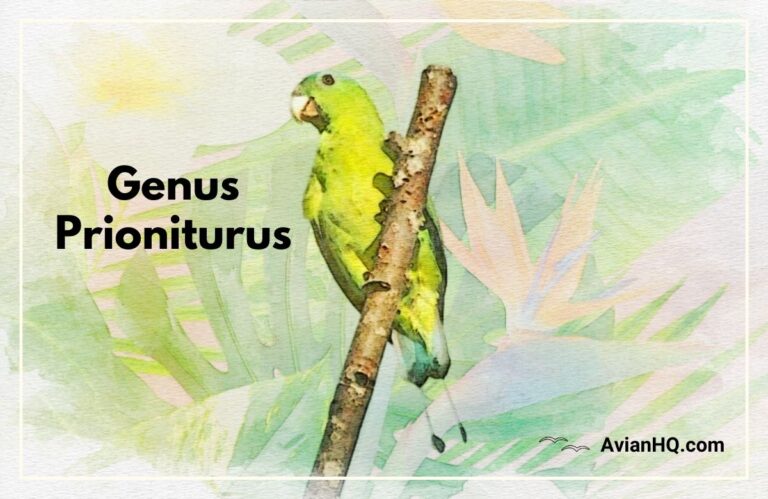Golden-mantled Racket-tail (Prioniturus platurus)
The Golden-mantled Racket-tail Parrot (Prioniturus platurus) is a beautiful and fascinating bird endemic to Indonesia. With it’s vibrant green plumage accented with splashes of red, orange, blue, and black, this parrot is a real stunner. But there’s more to this species than it’s looks.
The Golden-mantled Racket-tail has some very unique features, including it’s namesake long central tail feathers that end in paddle-shaped “rackets.” It also has a complex social structure, forming noisy flocks that travel far and wide in search of fruiting trees and other food sources.
In this article, you’ll learn all about the Golden-mantled Racket-tail Parrot – from it’s taxonomy and physical description, to it’s habitat, diet, breeding habits, conservation status, and more. We’ll highlight just what makes this parrot so special, why it’s important to protect, and some ways you can help ensure the species continues to prosper in the wild.
So let’s get started on our in-depth look at this beautiful and distinct bird, the Golden-mantled Racket-tail Parrot!
Physical Appearance
The Golden-mantled Racket-tail is a medium-sized parrot, measuring around 11 inches (28 cm) long and weighing between 7-8 ounces (200-225 grams).
Adult Males
Adult males have bright green plumage on their heads, backs, rumps, wings, and underparts. They have a distinctive rose-red spot surrounded by a blue-gray blotch above each eye. There is also an orange band across the mantle. The upper wing coverts are gray, while the secondary wing feathers are greenish-blue with yellowish inner margins.
The namesake racketed central tail feathers are green at the base but elongated into paddle shapes with bare black and blue-tinged tips. The outer tail feathers are green with a black band near the tips.
Adult Females
Adult females are similar to the males but lack the red spot above the eye and the orange nape collar. Their upper wing coverts are greener, and their tail “rackets” are shorter.
Juveniles
Juvenile Golden-mantled Racket-tails resemble adult females, but their tail feathers do not yet have the distinctive bare shafts and racketed tips.
Bill, Eyes, and Legs
These parrots have pale gray bills, with the lower mandible and bill tip being darker gray. Their irises are dark brown. Their legs are gray.
Subspecies
There are three recognized subspecies of the Golden-mantled Racket-tail:
P.p. platurus
This is the nominate subspecies, occurring on Sulawesi and nearby islands including Siau, Lembeh, Dodepo, Muna, Butung, Togian, and Banggai Islands.
P.p. talautensis
This subspecies is found on the Talaud Islands of Karakelong and Salebabu. Compared to the nominate race, P.p. talautensis males are generally paler with less gray on the mantle and wing coverts. The reddish-pink spot on the hindcrown is more pronounced, with a larger blue patch. Females are similar to P.p. platurus but paler green overall.
P.p. sinerubris
Occurring on Taliabu and Mangole Islands in the Sula chain, P.p. sinerubris males lack the reddish-pink hindcrown spot. Their mantles and wing coverts are green with a slight gray wash. The bend of the wing and lesser coverts are suffused with purple. This subspecies is smaller in size than the others.
Vocalizations
The Golden-mantled Racket-tail has a distinctive call consisting of various whistling notes that are slurred together into a musical, moderately high-pitched sound.
Their vocalizations have been described as sounding flute-like or reminiscent of a wolf-whistle. The calls are often described as “sweet” and melodious.
Some of the parrot’s other sounds are harsher and more guttural in nature. Their contact calls are high-pitched chirping sounds. When disturbed or alarmed, they may make loud, rasping squawks.
The Golden-mantled Racket-tail is quite a vocal species, and their calls are one of the better ways to detect their presence in forested areas, since they can often be difficult to spot among the treetops. Their vocalizations are an important part of communication between flock members.
Habitat and Distribution
The Golden-mantled Racket-tail is endemic to Indonesia, inhabiting several islands and island groups.
Habitat
This species is found in humid forest edges, woodlands, orchards, and moss forests. It occurs from the lowlands up to about 6,500 feet (2,000 m) in elevation, but is most common above 3,000 feet (1,000 m).
Distribution
The nominate subspecies P.p. platurus is restricted to Sulawesi and nearby islands including Siau, Lembeh, Togian, Banggai, Muna, and Butung.
P.p. talautensis is limited to the Talaud Islands of Karakelong and Salebabu.
P.p. sinerubris only occurs on Taliabu and Mangole Islands in the Sula chain.
Exact population numbers are uncertain, but the global population is estimated to be above 10,000 mature individuals and considered stable. The P.p. platurus likely numbers above 10,000 birds; the P.p. talautensis has a smaller population around 5,000 individuals; and the P.p. sinerubris may number around 10,000 birds.
Diet and Feeding Behavior
In the wild, the Golden-mantled Racket-tail’s diet consists primarily of fruits, seeds, and blossoms.
Some of the fruit trees they feed on include mangos (Mangifera indica), figs (Ficus sp.), and other native Indonesian tree fruits. They have also been observed feeding on corn and occasionally raiding mango plantations.
Seeds from plants like acacias as well as blossoms and nectar from flowers and orchids provide other sources of nutrition.
These parrots usually forage for food in small, noisy flocks of 5-10 individuals. They will travel widely through the forest canopy each day, moving between feeding and roosting sites.
Their traveling, social lifestyle means they depend on a variety of food sources across a broad habitat range. Protecting their forest habitat and food plants is crucial for their long-term survival.
Breeding and Reproduction
Relatively little is known about the breeding habits of the Golden-mantled Racket-tail.
The breeding season appears to be in October. A female in breeding condition was observed during this month.
They nest in tree cavities, likely those created naturally by decay in living trees or those excavated previously by woodpeckers.
Clutch size is unknown but likely similar to other parrots of their size, which often lay 3-5 eggs.
Incubation period, fledging age, hatchling weights, and other details of their breeding have not been reported in scientific literature. More research is needed to better understand the reproductive biology and behavior of this species.
Protecting large, mature trees with nesting cavities is important for giving Golden-mantled Racket-tails adequate places to raise their young each year.
Conservation Status and Threats
The Golden-mantled Racket-tail is evaluated as Least Concern on the IUCN Red List of Threatened Species. However, there are some conservation concerns, especially for certain subspecies.
The species as a whole has a relatively wide distribution and the overall population is considered stable. But some threats to monitor include:
- Habitat loss from deforestation – Logging, agricultural expansion, and human settlement growth could reduce suitable forest habitat, especially at higher elevations.
- Capture for the pet trade – Racket-tails are popular species in aviculture and are traded domestically and internationally. Unsustainable trapping could pose a threat.
- Climate change – Could alter forest habitats and food availability long-term.
P.p. talautensis has a more limited island distribution and smaller population of around 5,000 birds, making it more vulnerable to extinction. Continued habitat protection is important for this subspecies.
The Golden-mantled Racket-tail is listed under Appendix II of CITES, indicating some regulation of trade is required to ensure the species survives. Ongoing monitoring of wild populations and enforcement of trade laws remain important.
Conclusion
The Golden-mantled Racket-tail is a beautiful and unique parrot endemic to Indonesia’s forests. With it’s vibrant plumage, distinctive vocalizations, and fascinating tail “rackets,” this species has captivated ornithologists and aviculturists alike.
While not currently considered a threatened species, there are some conservation concerns that need ongoing monitoring, especially for the Talaud subspecies. Maintaining habitat corridors between higher and lower elevation forests could be key for protecting food resources and nesting sites. Regulation and enforcement of the wild bird trade remains crucial as well.
More research on the Golden-mantled Racket-tail’s nesting habits, reproductive biology, and other behavior could provide valuable insights for conservation. Community education and engagement of local landowners will also be important for protecting key forest areas.
With proper management, this regal Indonesian parrot will hopefully continue flourishing for many years to come. It’s beauty and uniqueness make the Golden-mantled Racket-tail a treasured part of Indonesia’s natural heritage, one very much worth safeguarding.

